Let's Talk About Heat Challenge
On this page:
- Challenge Description
- Challenge Winners
- Achieving Resilient Communities (ARC) Ventura Project Partners
- City of Phoenix, Ariz.
- Crook County Health Department
- The Farmworker Association of Florida
- Miami-Dade County, Fla.
- Pacific Northwest Agricultural Safety and Health (PNASH) Center
- Public Health - Seattle & King County
- Trust for Public Land
- WeCount!
- West Harlem Environmental Action, Inc.
- Honorable Mentions
Challenge Description
Background
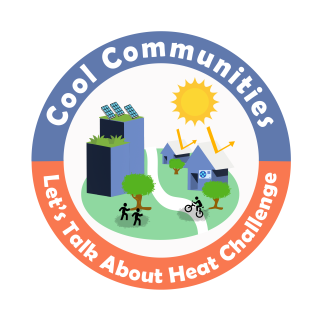
Extreme heat, when temperatures are much hotter than average over consecutive days, is an increasing problem for all parts of the United States. Steadily increasing temperatures due to climate change are intensifying already higher temperatures in heat island areas, where buildings, roads, and other infrastructure absorb and re-emit the sun’s heat more than natural landscapes. Warmer temperatures in heat island areas can also lead to increases in air pollutants and greenhouse gas emissions, including higher concentrations of ground-level ozone and fine particulate matter. Ozone can also be transported long distances by wind, so even rural areas can experience high ozone levels. Extreme heat is affecting rural, suburban, and urban areas now and will continue into the future.
Communities need help developing clear messages about the risks of extreme heat and actions people can take to stay safe and build cooler communities for the long-term. Extreme heat is linked to an increased risk of illness and death and has disproportionate impacts on people who are underserved and overburdened. People of color and people with lower incomes often live in neighborhoods with fewer trees and less greenery, which makes these areas hotter than wealthier areas of the same city. Similarly, many underserved and overburdened people in both rural and urban communities are working outside for hours at a time, increasing their exposure to heat stressors.
The Challenge
To help address this need, EPA and co-sponsors launched the Let's Talk About Heat Challenge, a national competition to identify innovative and effective communication strategies that inform people of the risks of extreme heat and offer ways to keep safe during the hottest days. The challenge was developed in support of the National Climate Task Force's Extreme Heat Interagency Working Group, which is being led by EPA, the National Oceanic and Atmospheric Administration (NOAA), and the U.S. Department of Health and Human Services (HHS) with support from the White House.
Challenge Co-Sponsor Organizations
The below organizations are co-sponsoring this challenge.
- National Oceanic and Atmospheric Administration
- Federal Emergency Management Agency
- U.S. Department of Health and Human Services
- The Atlantic Council
- Georgetown Climate Center
- Groundwork USA
- National Association of County and City Health Officials
Challenge Winners
The 10 winners of the Let’s Talk About Heat Challenge are listed below. Winners will receive prizes of $12,000 each for their innovative strategies and messages to raise awareness of extreme heat risks and protect public health. The challenge sponsors will work to share the winning submissions and best practices with communities across the nation.
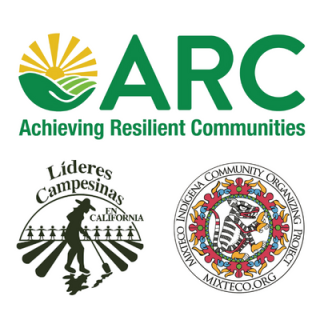
Achieving Resilient Communities (ARC) Ventura Project Partners
- Partners: Mixteco Indigena Community Organizing Project (MICOP) and Lideres Campesinas
- Location: Ventura County, Calif.
- Selected for: Communications strategy to work with community organizers to expand access to information on how Ventura County farmworkers can protect their health during heat waves and forest fires in indigenous languages and audiovisual formats.
- Target Audience: Farmworkers
- Heat Safety Messages and Materials:

City of Phoenix, Ariz.
- Selected for: We’re Cool outreach and communication campaign throughout the city to distribute heat relief supplies, share information about community cooling resources, and help connect residents to other critical social services including shelter, housing, identification, food, hygiene facilities, and transportation.
- Target Audience: Unsheltered neighbors
- Heat Safety Messages and Materials:
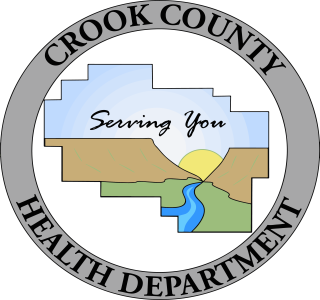
Crook County Health Department
- Location: Crook County, Ore.
- Selected for: Proposed summer-long outreach and education campaign for children, students, and childcare workers at various locations across the county to provide them with information and resources on heat safety to have a safe and healthy summer.
- Target Audience: Children, students, and childcare workers
- Heat Safety Messages and Materials:

The Farmworker Association of Florida
- Partners/Location: Volusia County, Orange County, Lake County, Indian River County, Collier County, Miami-Dade County, Fla.
- Selected for: Development of a widely used curriculum called PISCA (Pesticide and Heat Stress Education for Latino Farmworkers that is Culturally Appropriate) to help outdoor workers in Florida protect themselves on hot days.
- Target Audience: Outdoor workers
- Heat Safety Messages and Materials:
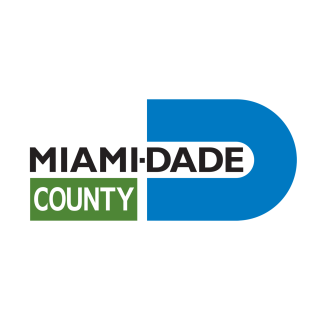
Miami-Dade County, Florida
- Selected for: Multilingual Heat Season Campaign with a simple, empowering message – drink water, find shade, rest. The campaign prioritized reaching communities most at risk for heat-related illnesses.
- Target Audience: People living in neighborhoods with higher incidences of heat related illnesses, low-income folks, outdoor workers, and families with children
- Heat Safety Messages and Materials:
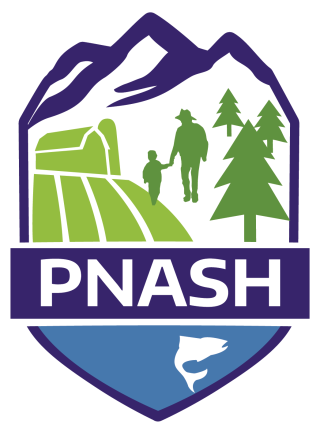
Pacific Northwest Agricultural Safety and Health (PNASH) Center
- Location: Northwest states (AK, WA, OR, ID) and National
- Selected for: Heat Education & Awareness Tools (HEAT), developed in collaboration with agricultural workers, educators, promotores, and others, which features a facilitator’s guide, heat awareness system (with partner, WSU Ag Weather Net), worksite posters, interactive educational materials for workers, and radio programing in English and Spanish.
- Target Audience: Farmworkers
- Heat Safety Messages and Materials:

Public Health - Seattle & King County
- Partners: University of Washington Department of Environmental & Occupational Health Sciences; artwork by David Lasky.
- Selected for: Stay Safe in the Heat campaign using comics to reach people at high risk for heat illnesses and in 13 languages.
- Target Audience: People with existing health disparities.
- Heat Safety Messages and Materials:
- Hot Weather Preparedness webpage including downloadable Stay Safe in the Heat mini comic book in English, Amharic, Arabic, Chinese, French, Korean, Russian, Somali, Spanish, Tagalog, Ukrainian, Vietnamese
- Stay Safe in the Heat During Summer (Somali) animated video by Somali Bridge
- Stay Safe in the Heat Flip Book
- Online Full-color Comics Strip

Trust for Public Land
- Location: Philadelphia, Penn.
- Selected for: “Heat Response: Creative Action for Philly’s Rising Temperatures (HR)” initiative focused on community engagement through public art with local artists, residents, and city agencies to combat environmental racism and historic inequity.
- Target Audience: Fairhill, Grays Ferry, and Southeast Philadelphia
- Heat Safety Messages and Materials:
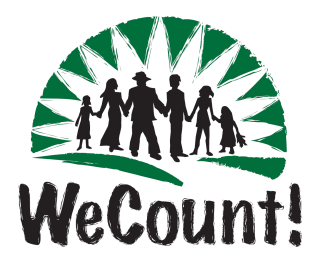
WeCount!
- Location: Miami-Dade County, Fla.
- Selected for: ¡Que Calor! initiative that will broadcast heat prevention public service announcements in native Mayan dialects and heat-related programs via radio to reach outdoor workers, who are particularly at risk from extreme heat. The programs will help outdoor workers better understand the health risks of extreme heat, identify symptoms of heat illness or stroke, and take life-saving actions to protect themselves and their co-workers.
- Target Audience: Outdoor workers
- Heat Safety Messages and Materials:
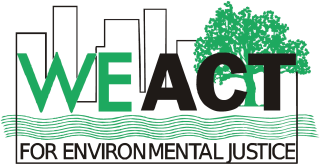
West Harlem Environmental Action, Inc.
- Location: New York, N.Y.
- Selected for: Proposed interactive brochure, the Climate Ready Uptown Plan, to inform Northern Manhattan residents on the dangers of extreme heat and encourage them to participate in life-saving emergency preparedness planning.
- Target Audience: Black and Hispanic residents in Northern Manhattan
Honorable Mentions
CPWR – The Center for Construction Research and Training
- Location: National
- Target Audience: Construction contractors and workers
- Heat Safety Messages and Materials:
The City of Albuquerque
- Location: Albuquerque, New Mexico
- Target Audience: Frontline communities, such as residents with inadequate cooling in their homes and the unhoused population
- Heat Safety Messages and Materials:
Middle Tennessee State University
- Location: Nashville and Murfreesboro, Tennessee
- Target Audience: Teens ages 15-18 that live in the urban area
- Heat Safety Messages and Materials:
Midstory
- Location: Toledo, Ohio
- Target Audience: Neighborhoods at higher heat risk in Toledo
- Heat Safety Messages and Materials:
Los Angeles Regional Collaborative for Climate Action and Sustainability (LARC)
- Location: Los Angeles County and the 88 cities within its boundaries, California
- Target Audience: Residents at higher risk for heat-related illness, with content in English and Spanish specific to older adults, children, people with disabilities/preexisting conditions, pregnant people, outdoor workers, people experiencing homelessness, and pets.
- Heat Safety Messages and Materials:
The Next Door Inc.
- Location: The Mid Columbia River Gorge area. Oregon
- Target Audience: Spanish-speaking community, especially farmworkers and their families
- Heat Safety Messages and Materials:
- Health Outreach Audio Files of Radio Dramas on Heat Risks (Spanish)
Rhode Island Department of Health Climate Change and Health Program
- Location: Rhode Island
- Target Audience: Outdoor workers and those who recreate or otherwise spend time outdoors in the heat
- Heat Safety Messages and Materials:
Safety Automation & Visualization Environment (SAVE) Lab at the University of Alabama
- Location: Tuscaloosa, Alabama
- Target Audience: Workers from the general, construction, maritime, and firefighting industries
- Heat Safety Messages and Materials:
The State of California
- Location: California
- Target Audience: California’s overburdened and underserved populations, including workers and their employers
- Heat Safety Messages and Materials:
University of Illinois Urbana-Champaign, Illinois High School Association
- Location: Illinois
- Target Audience: Illinois coaches, athletic directors, and trainers of high school sports played outdoors or in indoor facilities without AC.
- Heat Safety Messages and Materials:
Virginia Clinicians for Climate Action (via Virginia Organizing)
- Location: Virginia
- Target Audience: Families, reached through primary care medical offices
- Heat Safety Messages and Materials:
